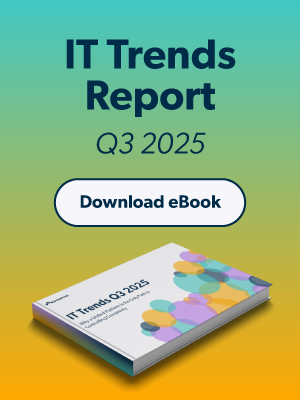Updated on September 29, 2025
The term “constrained endpoint” carries distinct meanings depending on its technical context. It can refer to a low-power Internet of Things (IoT) device with physical limitations or a logical security boundary in a system like PowerShell. Understanding the differences is crucial for IT professionals, network administrators, and cybersecurity specialists who manage these environments.
This article provides a technical definition of constrained endpoints in both IoT and system administration contexts. It explains their operational mechanics, key features, and practical use cases, offering a clear reference for professionals working with these technologies.
Definition and Core Concepts
A constrained endpoint’s definition shifts based on whether it is a physical device or a logical security configuration.
In the Internet of Things (IoT)
In an IoT context, a constrained endpoint is a device with significant hardware limitations. These devices—such as sensors, actuators, or microcontrollers—have minimal processing speed, memory (RAM and flash), and available energy. They often operate on battery power and communicate over low-power, lossy networks (LLNs).
The Internet Engineering Task Force (IETF) provides formal definitions for constrained nodes and networks to standardize solutions for connecting these devices to the internet. The primary challenge is enabling communication and functionality despite severe resource restrictions.
In System Administration (e.g., PowerShell)
In system administration, particularly with PowerShell, a constrained endpoint is a security configuration that restricts a remote user’s session capabilities. It serves as a foundational component of the Just Enough Administration (JEA) security principle.
By creating a constrained endpoint, an administrator defines a specific set of commands, functions, and parameters a user is permitted to execute. This control limits the potential for unauthorized or malicious actions by enforcing the principle of least privilege on remote sessions.
How It Works
The functionality of a constrained endpoint is directly tied to its specific implementation, whether as a resource-limited IoT device or a software-based security control.
IoT Endpoints
Constrained IoT endpoints function by using lightweight protocols designed to accommodate their hardware limitations. The most prominent protocol is the Constrained Application Protocol (CoAP), an IETF standard. CoAP operates over the User Datagram Protocol (UDP), which has significantly less overhead than the Transmission Control Protocol (TCP).
CoAP uses a simple, binary message format to enable efficient communication over low-bandwidth networks. It also supports asynchronous messaging and multicast communication, allowing devices to conserve power while transmitting data effectively.
PowerShell Endpoints
A constrained PowerShell endpoint is a logical configuration registered on a Windows host, not a physical device. An administrator creates it by defining a session configuration file (.pssc) that specifies a limited command set, a restricted language mode, and an explicit list of accessible modules.
When a remote user connects to this endpoint, their session is automatically confined to the rules defined in the configuration. This mechanism prevents them from executing unauthorized scripts, accessing sensitive data, or performing actions outside their designated role.
Key Features and Components
The features of constrained endpoints differ entirely between IoT hardware and PowerShell security configurations.
IoT Endpoints
- Resource Efficiency: These devices are designed for minimal CPU, RAM, and battery consumption to ensure long-term operation.
- Lightweight Protocols: They rely on protocols built for constrained environments, such as CoAP or Message Queuing Telemetry Transport for Sensor Networks (MQTT-SN).
- Simplified Communication: Communication typically follows a simple request-response model (CoAP) or a publish-subscribe model (MQTT).
PowerShell Endpoints
- Just Enough Administration (JEA): This feature enforces the principle of least privilege, granting users only the permissions necessary to perform their tasks.
- Language Restriction: Endpoints can be configured to a ConstrainedLanguage or NoLanguage mode to block the use of scripts, variables, and complex operators.
- Visible Command List: Administrators can explicitly define which cmdlets, functions, and external commands are accessible to the user, hiding all others.
Use Cases and Applications
The two types of constrained endpoints are applied in entirely different domains to solve distinct problems.
IoT Endpoints
- Smart Homes: Temperature, light, and motion sensors report data to a central hub, enabling automated home management.
- Industrial IoT (IIoT): Manufacturing sensors monitor equipment status, environmental conditions, or product quality on a factory floor.
- Agriculture: Soil moisture and environmental sensors provide data for precision irrigation and crop management in smart farming applications.
PowerShell Endpoints
- Delegated Administration: A help desk team can be granted permission to restart a specific service on a server without receiving full administrator privileges.
- DevOps Automation: A build system can be given the authority to deploy applications to a server without having unrestricted access to the host operating system.
- Security Hardening: The attack surface of a server is reduced by limiting the number of commands a remote user or automated process can execute.
Key Terms Appendix
- Just Enough Administration (JEA): A PowerShell security technology that enables role-based administration by limiting users to a restricted set of commands.
- Constrained Application Protocol (CoAP): A specialized web transfer protocol designed for resource-constrained devices and networks, often used in IoT.
- Internet of Things (IoT): A network of physical objects embedded with sensors, software, and other technologies for connecting and exchanging data over the internet.
- Datagram Transport Layer Security (DTLS): A protocol that provides communications security for datagram-based applications and is often used to secure CoAP.
- Low-power, Lossy Network (LLN): A network of embedded devices interconnected by constrained links, where a significant portion of the nodes are constrained in energy, memory, and processing resources.
- Application Programming Interface (API): A set of defined rules that enable different software applications to communicate with each other.



